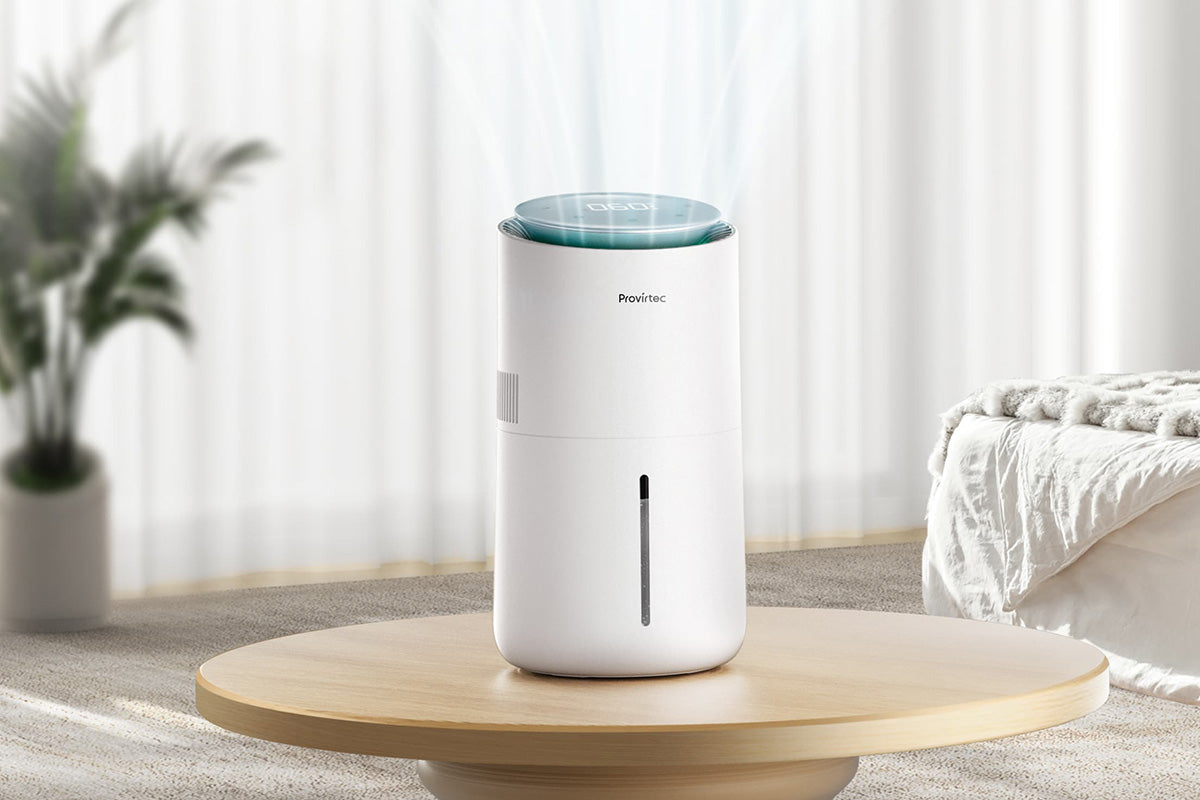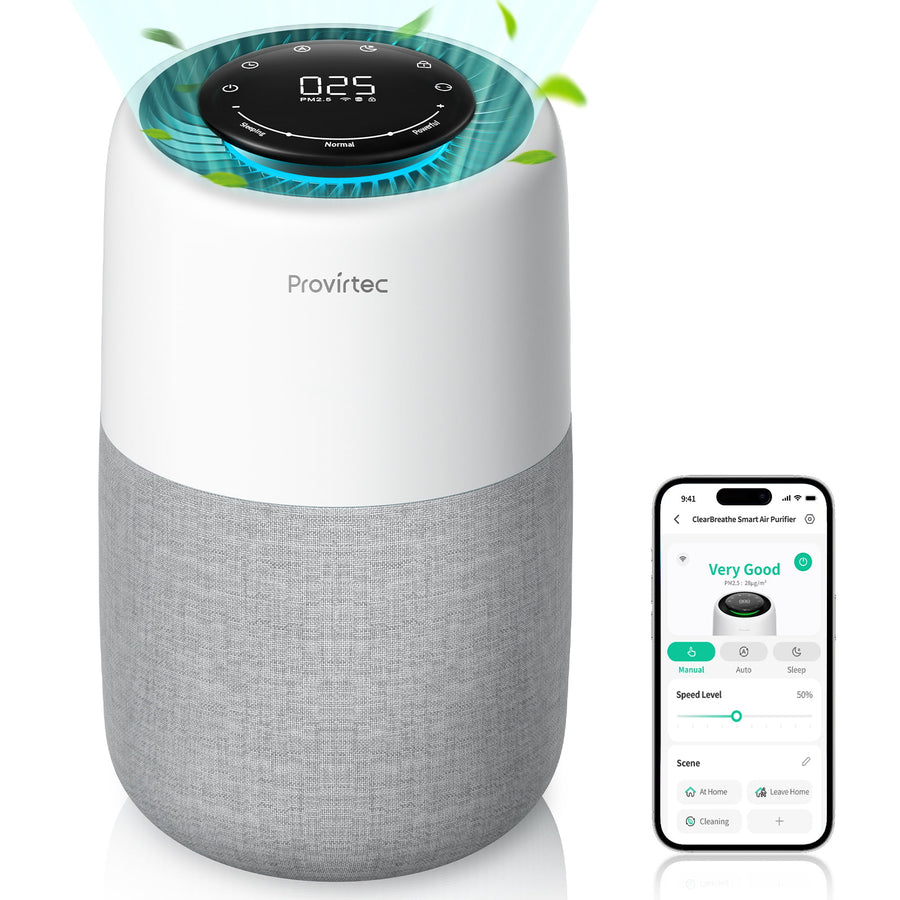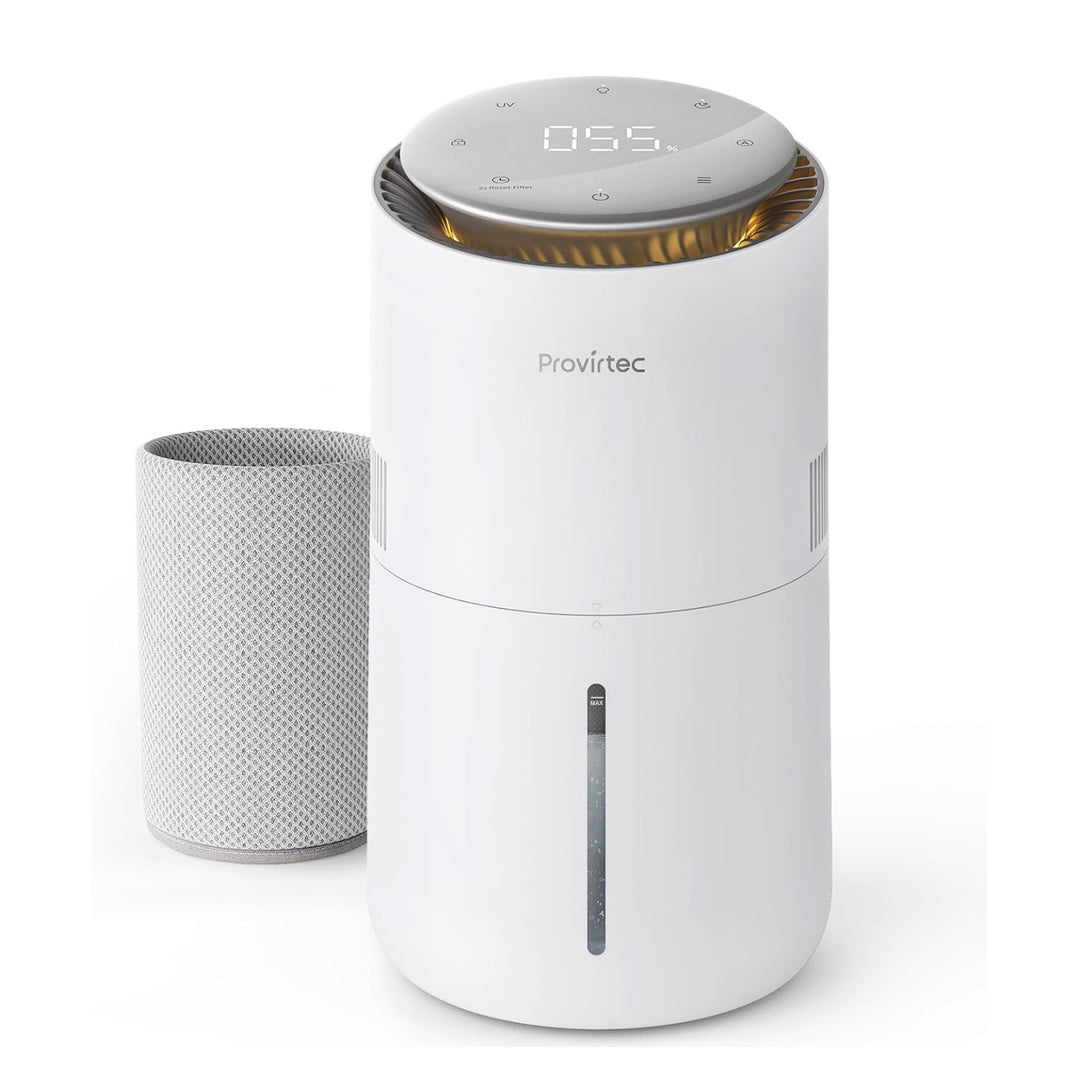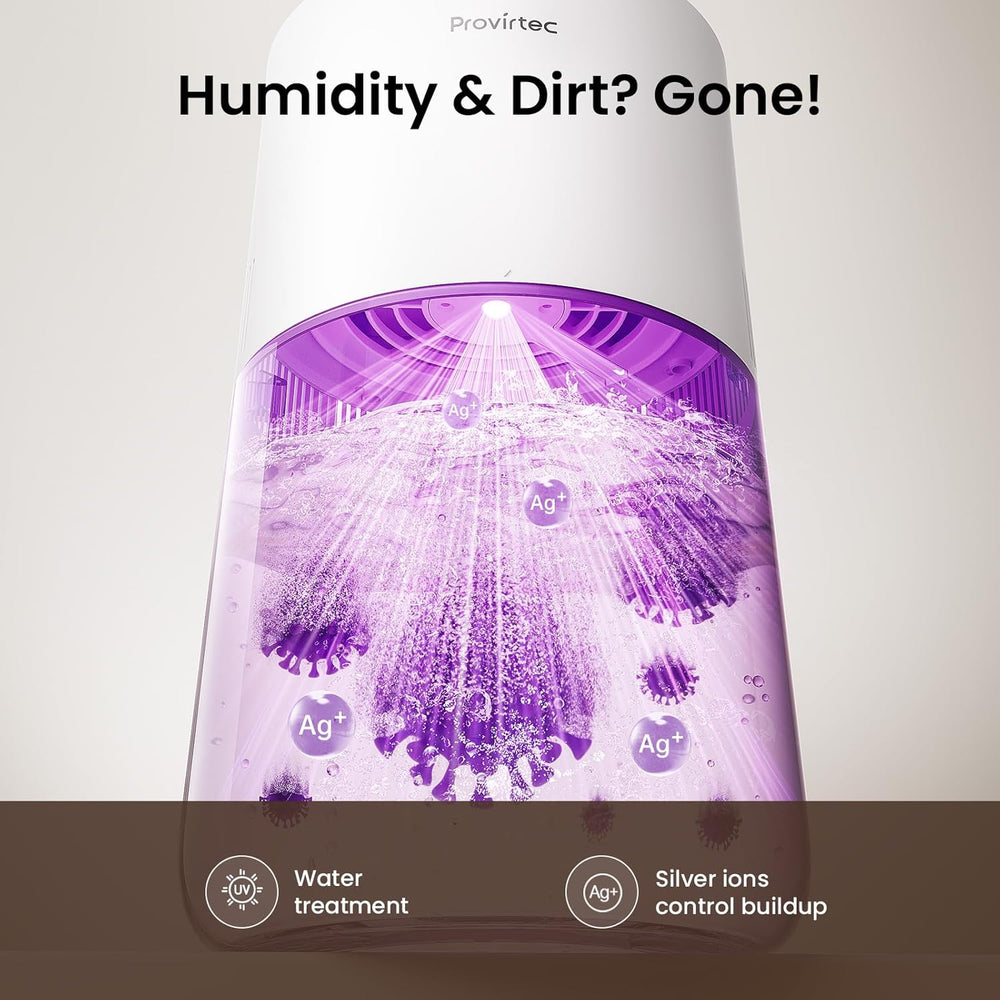What Does a Humidifier Do?

Humidity is crucial to our health and comfort. During dry seasons, the harsh, dry air can make us feel uncomfortable and may even trigger coughing and other health problems. That’s where humidifiers come in—like an open door to a more comfortable life. Not only do they increase indoor humidity, relieving various symptoms caused by dryness, but they also make it easier to breathe. In this article, we’ll dive into the different types of humidifiers, how they function, and the benefits of humidifiers, helping you understand the important role humidifiers play in your daily life.
What is a Humidifier? What Does a Humidifier Do?
A humidifier is a device that increases the amount of moisture in the air by releasing water vapor or mist, thereby improving overall air quality. When indoor air becomes too dry, a portable humidifier can significantly enhance the comfort of your living environment and effectively alleviate various health problems caused by dryness.
What Types of Humidifiers Are There? How Do They Work?
There are three common types of portable humidifiers, including ultrasonic humidifier, evaporative humidifier and steam-based humidifier. Let’s take a deeper look at each of them.
1. Ultrasonic Humidifier
Ultrasonic humidifiers use high-frequency vibrations to convert water into low-pressure steam. These vibrations push water particles upward, allowing them to be quickly absorbed by airflow and released into the air as a fine mist.
The water droplets in this mist are relatively large and have a limited range of dispersion. If the water contains a high level of impurities, it may leave a white dust residue on nearby surfaces such as furniture, floors, or walls, potentially leading to uneven humidity distribution in the room.
In addition, if the water contains mold or pathogens, these contaminants may also be spread by the mist. Therefore, it is recommended that you use distilled water and clean the water tank regularly to prevent mold growth and the spread of contaminants.
|
PROS: |
CONS: |
|
|
2. Evaporative Humidifier
Evaporative humidifiers promote water evaporation by circulating water through a porous medium and generating airflow. Compared to ultrasonic humidifiers, they release smaller water droplets that can travel farther in the air, providing a more even humidification effect.
The evaporation rate is affected by air temperature, humidity, and airflow speed, with higher evaporation rates in low temperature, low humidity environments. Thus, this type of humidifier has a degree of “self-regulating” capability; as the room humidity increases, the output of water vapor naturally decreases.
Evaporative humidifiers also filter the evaporated water, reducing the spread of minerals and pathogens in the air. However, it’s important to regularly clean and replace the porous media according to the manufacturer's recommendations to prevent microbial growth.
| PROS: | CONS: |
|
|
3. Steam-Based Humidifier
Steam-based humidifiers generate steam by using electric heaters or electrodes to heat water.
Unlike evaporative humidifiers, steam-based models use electricity to speed up the evaporation process, resulting in higher temperatures that can kill most bacteria. The steam they release can humidify a room more evenly, but they consume more energy and do not self-regulate based on ambient humidity.
The water tank in steam-based humidifiers may rust, so it is recommended that distilled water be used to ensure proper operation and extend the life of the humidifier.
| PROS: | CONS: |
|
|
What Are the Benefits of Humidifiers?
Humidifiers for home offer a range of benefits, including improved respiratory health, relief from dry skin, and soothing eye discomfort. The best humidifiers can even help prevent or alleviate symptoms of colds and flu. Let’s take a closer look at the specific humidifier benefits.
Improved Respiratory Health
A humidifier for house can reduce nasal congestion and lower the risk of sinus issues, allergies, and respiratory infections, significantly enhancing respiratory health. This is especially important during winter when using heating systems, as dry air can lead to problems such as asthma, bronchitis, sinusitis, and nosebleeds. By adding moisture to the air, a house humidifier helps alleviate these symptoms and creates a more comfortable and healthier breathing environment.
Studies have shown that when indoor humidity is below 23%, the transmission rate of influenza (the ability to spread the virus through respiratory droplets) is higher. Maintaining indoor humidity above 43% significantly reduces this transmission rate. Therefore, maintaining optimal indoor humidity is critical for respiratory health. Experts recommend keeping humidity levels between 30% and 60% to prevent dryness and enhance comfort. Using a home humidifier to achieve and maintain this ideal humidity level can improve respiratory health.

Enhanced Moisture for Dry Skin and Hair
Humidifiers provide the optimal humidity needed to keep skin and hair hydrated, helping to prevent dryness, cracking, and itching. Dry skin is a common issue, especially during the drier winter months. Dry air can also cause you to wake up with dry eyes, especially if you keep the heat on at night to stay warm. Adding a bedroom humidifier in the winter can improve indoor air quality and maintain moisture levels, benefiting both your skin and hair.
Soothing Eye and Head Comfort
Maintaining optimal humidity levels with a small humidifier can soothe discomfort in the eyes and head, alleviating dryness, itching, and irritation. By ensuring that the indoor air isn’t too dry or too humid, an air humidifier creates a more comfortable environment.
What do I need to pay attention to when using a humidifier?
Although humidifiers bring many benefits to our lives, it’s important to keep the following points in mind when using them:
Control Humidity
Ideally, indoor humidity should be maintained between 30% and 50% to reduce the growth of bacteria and mold and to lower the risk of triggering respiratory conditions such as allergies and asthma. When using an air humidifier, remember to monitor the humidity levels. You can purchase a hygrometer to accurately measure the humidity level in your home.
Use Distilled Water
When using a humidifier for bedroom, it’s best to use distilled water. Distilled water has fewer minerals compared to tap water, which means it won’t release unhealthy mineral particles into the air.
Clean the Humidifier Regularly
After each use, you should clean the whole house humidifier and make sure the water tank is completely dry before using it again. To prevent or remove scale or mold, clean the humidifier for room every few days with a mixture of water and vinegar or hydrogen peroxide, or use other cleaning solutions recommended by the manufacturer.

Replace Filters Regularly
Some humidifiers come with filters or other components that require cleaning or replacement. Be sure to change these regularly to ensure optimal humidification performance.
Safety Considerations
The water in the humidifier may boil or heat up, posing a safety hazard; keep the humidifier out of the reach of children.
Humidifiers play a vital role in improving indoor air quality and enhancing the comfort of your living space. Whether alleviating respiratory problems, moisturizing skin, or promoting overall health, the best humidifiers can make a significant difference in your life. However, it’s essential to control humidity levels, clean your best humidifier for bedroom regularly, and consider safety measures to ensure optimal performance and safety. Try Provirtec MistFree humidifier and use it wisely, you can create a healthier, more comfortable home environment.
Referred Research Source:
1. https://health.clevelandclinic.org/can-best-combat-effects-dry-winter-air
2. https://journals.plos.org/plosone/article?id=10.1371/journal.pone.0057485#s3
3. https://todayshomeowner.com/hvac/guide/humidity-level-at-home/
4. https://health.clevelandclinic.org/can-best-combat-effects-dry-winter-air
5. https://journals.plos.org/plosone/article?id=10.1371/journal.pone.0057485#s3
















Leave a comment